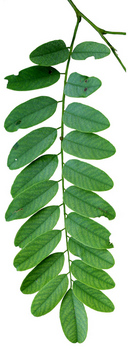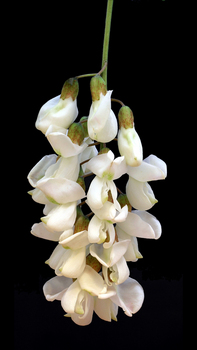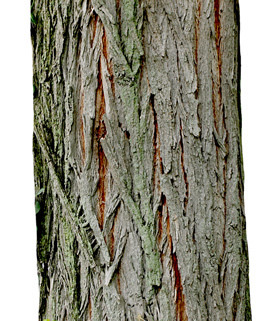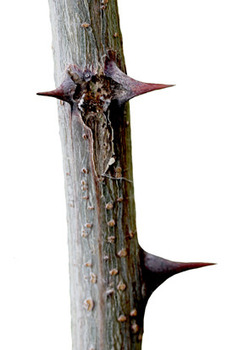Black Locust
Classification:
Family: Fabaceae, pea family
Genus, species: Robinia pseudo-acacia
Leaves:
Leaves are pinnately compound. Each leaf has 7 to 19 leaflets. Leaflets are elliptical in shape with smooth untoothed edges. Leaflets are larger and rounder compared to Honey Locust leaflets. Each leaf has a pair of short thorns at the base.
Bark:
Bark is light gray, deeply furrowed with long rough forking ridges.
Flowers:
Flowers are fragrant, white, shaped like pea flowers, grouped in showy hanging clusters.
Fruit:
Fruit is a long flat pod, dark brown, 2 to 4 inches long.
Seeds:
Seeds are dark brown, flat, beanlike.
Roots:
Roots contain nitrogen-fixing bacteria.
Common Uses and Interesting Facts:
Black locust wood is extremely hard, rot-resistant, durable. Bark and leaves are toxic.
More Information:
The genus name Robinia is named for Jean Robin (1550-1629) and Vesparian Robin (1579-1600), herbalists and gardeners for Henry VI of France. The species name pseudo- is from the Greek for "false" and -acacia is from the Greek for "thorn."
Photos:Black Locust leaf

Black Locust flowers

Black Locust bark

Black Locust thorns
